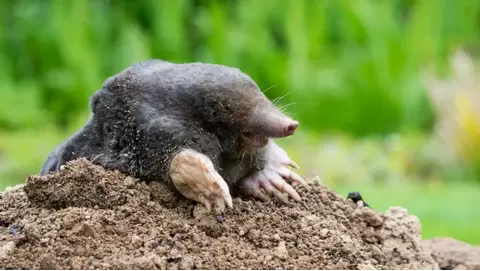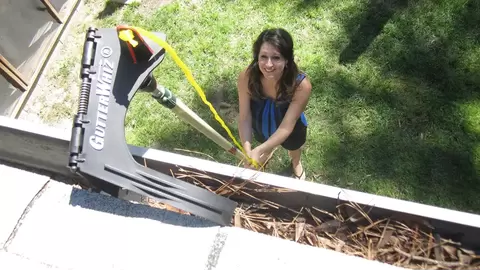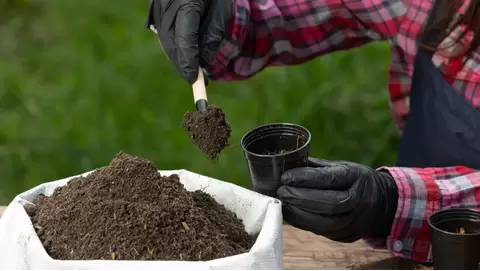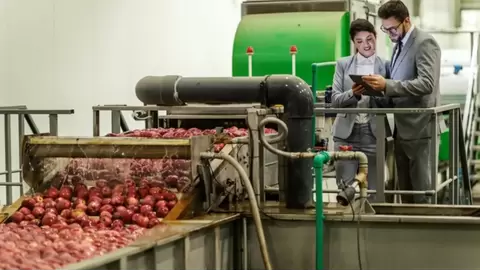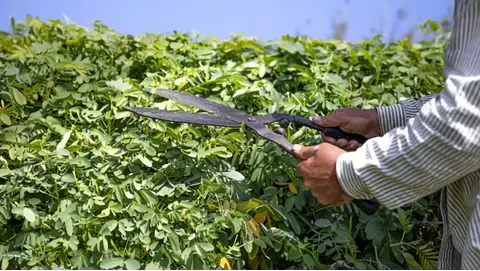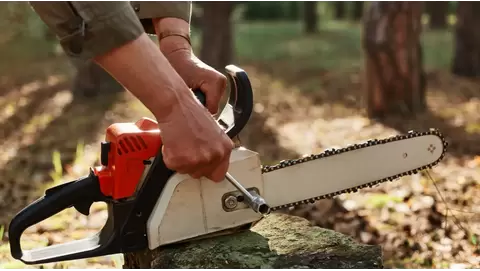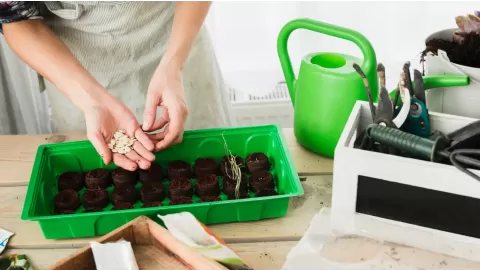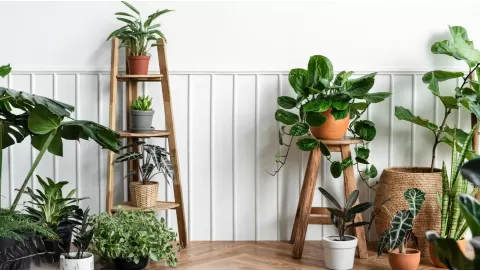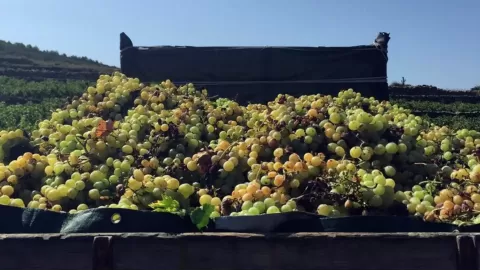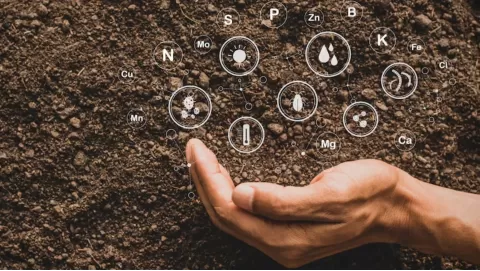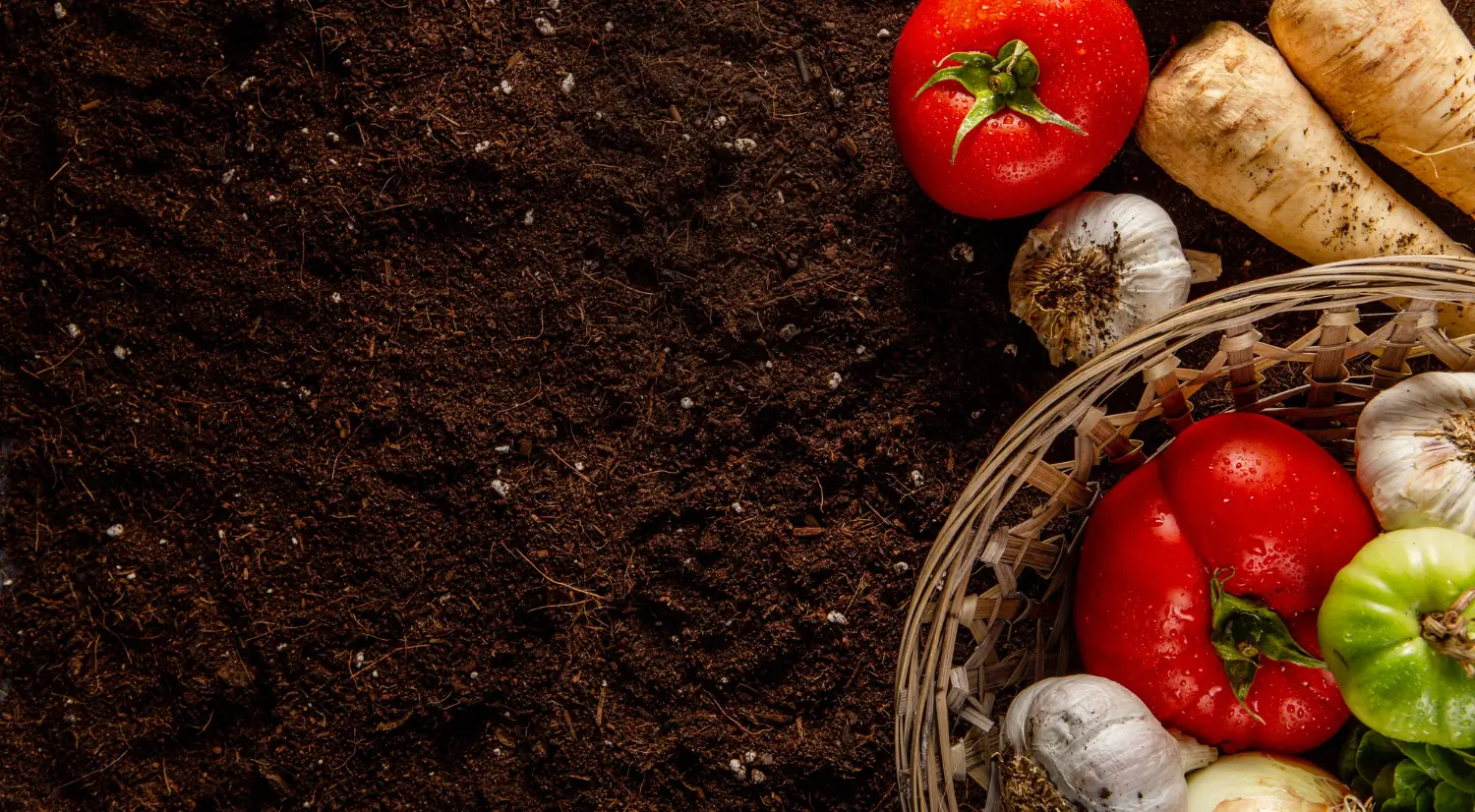
What is mushroom compost and how to use it in your garden
Poor soil is a challenge many home gardeners struggle with. In some places, the soil is just too dry and hard; in others, it may be low in nutrients and even sandy. Without good soil, plants suffer from unhealthy growth. Some can use chemical fertilizers, but these only provide temporary assistance and can be bad for the environment.
MEET THE EXPERT
- ■ Roman Stolper is a compost production technologist with over 25 years of experience in compost production and mushroom cultivation, currently associated with Custom Compost Limited and Walsh Mushrooms.
- ■ Calin Navolan is a Compost & Mushroom Technology Consultant with over 25 years of qualitative experience as a Compost and Mushroom Specialist.
Mushroom compost is a better answer. By mixing this dark, rich compost with garden soil, the earth becomes soft and healthy. Plants grow stronger and faster not just because the compost conditions the soil, but also makes it hold more moisture and adds nutrients gently.
Organic compost for gardening is one component of smart gardening. It is the trick of adding nutrients to the soil without dispersing nasty chemicals on the lawn. Mushroom compost is good, because it is friendly to small, helpful soil organisms.
What Is Mushroom Compost?
Mushroom compost is a compost used to prepare soil for the cultivation of mushrooms and is a byproduct of mushroom farming. It is also known as spent mushroom compost or mushroom soil. Once the mushrooms have been harvested, the grow medium is no longer of any use in growing further mushrooms, but it's still rich in nutrients and can be put to good use in the garden.
Depending on the ingredients used to make it, some people may also refer to it as spent mushroom substrate or mushroom manure. No matter the name, it is a helpful soil conditioner for gardens.
How It’s Made
Mushroom compost is made with natural ingredients like straw, hay, animal manure (like horse or chicken manure), and sometimes of crop scraps. The material is mixed and undergoes hot composting. This heats the compost to such high temperatures as it causes the decomposing materials to break down.
Following that, the compost is pasteurized to destroy any harmful bacteria, insects or weed seeds. After the compost is mature, mushrooms are cultivated in wide trays or beds.
As the mushroom culture cycle progresses, the mushrooms consume most of the nutrients in the compost. What is left behind is a brown, decomposed wood-rich material, no longer a good medium for rearing mushrooms, but excellent for garden soils. That leftover is what gardeners know as mushroom compost.
Composition and Properties
Mushroom compost contains valuable nutrients and beneficial physical properties that can enhance plant growth. There are, however, a couple of things gardeners should know to use them properly and safely.
Nutrient Content
Mushroom compost is a blend of essential plant nutrients. It contains lesser amounts of nitrogen, phosphorus and potassium (generally about 1–2% nitrogen, 0.2% available phosphorus, and 1–2% potassium). They are provided slowly and steadily to the plant roots.
It is full of micronutrients and has a high calcium content great for fruit and vegetables. Calcium also helps thwart issues such as blossom-end rot in tomatoes and peppers.
Physical Characteristics
Mushroom compost is light and crumbly, which makes it ideal when working into garden soil. It also enhances drainage and soil aeration, which allows the roots to grow more easily.
The compost is generally a little bit alkaline with a pH of 7-8. As a result, it is unsuited to plants that like acidic soil, like blueberries, rhododendrons and azaleas.
Also, fresh mushroom compost can contain high concentrations of salts, which can be damaging to young plants or seedlings. To hedge against that, it’s probably better to allow the compost to cure or rest for a week or two before using it in the garden. This enables salts to rinse out and makes the compost softer on plants.
Benefits of Garden Soil
Mushroom compost has many benefits for gardeners. It aids in maintaining the soil quality, promotes the health of plants, and is an organic method of feeding the garden. Here are some of the best reasons.
Improves Soil Structure
The softness adds a softer texture to the soil, allowing it to become more manageable. It also enhances heavy clays and light sands by improving structure. As a result, plant roots are allowed to grow deeper and stronger. It also prevents the soil from getting too compact.
Helps Soil Hold Moisture
This compost becomes a sponge that retains water in the soil. This has the effect of keeping soil hydrated longer, particularly in dry and hot weather. Gardeners might also have to water less often, which means time and water are saved.
Provides Nutrients Slowly
Mushroom compost provides plants with a mild, timed-release source of nutrition. This will support a steady, sustained growth without scorching the roots, which can occur with powerful chemical fertilizers. Calcium is an added benefit for fruit and vegetable plants.
Supports Soil Life
Good soil teems with tiny living things like earthworms and useful microbes. Mushroom compost for vegetables provides nourishment to these organisms and promotes an active, living soil. The effect is to make the garden more fertile with time.
Environmentally Friendly
Mushroom compost is also good for the environment. It recycles refuse from mushroom farms and makes it useful. It is a natural method to nourish the soil without introducing potentially harmful chemicals.
How to Use Mushroom Compost
Mushroom compost can also be a garden soil amendment that users can add to garden bed areas, around vegetables and trees or in container mixes. But for maximum effect, it helps if gardeners know how to make use of it and when to apply it. The following offers a closer look at the many creative uses and benefits of mushroom compost in the garden.
Mushroom Compost Soil Amendment
A popular method to use mushroom compost is to combine it directly with the soil. This improves the texture of the soil as well as its nutrient content and water-holding capacity.
- For garden boxes, mushroom compost can be included in a ratio of 10% to 30% volume-wise. This is adding 1 to 3 buckets of compost to every 7 to 9 buckets of soil. In the case of very poor or heavy soils a greater percentage may be employed.
- When beginning a new garden bed or before seeds are sown, the compost should be dug into the top 15–20cm (6–8 inches) of soil. This will mix the compost thoroughly and provide the roots with better access to nutrients.
- Use mushroom compost as a top-dressing around the base of plants for established beds. This very slowly feeds the soil as rain or watering seep the nutrients downwards.
Mulch Application
Mushroom compost is also an excellent option for use on top of the soil as a layer of mulch to help protect the soil and promote the growth of plants. It serves as a natural barrier, aiding in water retention and weed control.
- Apply compost 2-3 cm (1 in) thick on the soil surface, particularly around the vegetables, trees and shrubs. This preserves the moisture of the soil, keeps it cool, decreases evaporation and prevents other weeds from sprouting.
- Use in spring or fall for excellent results. And in spring, it holds water as temperatures rise. In autumn, it covers the soil through winter and gradually enriches it.
- Mushroom compost can be relatively high in salt, especially when new. Do not mulch directly over top of seeds or young seedlings so that new plants are not smothered. Maintain a small area around the stem base to avoid salt stress and rot.
Potting Mix Component
Mushroom compost can also be added to homemade potting mixes if one wants to garden in a container. It enriches the soil with organic matter and mild nutrients that nourish plants.
- A simple blending might be 1 part mushroom compost, 1 part peat moss or coconut coir, 1 part perlite or coarse sand. This provides good drainage with moisture and nutrients retained.
- And some plants, such as azaleas, blueberries and camellias, like acidic soil. Mushroom compost is a little alkaline, so users may need to adjust the pH of the potting mix. Incorporating materials such as pine bark, sulfur or peat moss can make the mix more appropriate for these plants.
Tip for containers: Tap the roots and use well-aged mushroom compost that has been well-cured to prevent salt buildup in containers. Check drainage and do not over-water.
Timing Considerations
The timing of when to apply mushroom compost is crucial for preventing undue plant stress and maximizing the benefits.
- Fresh mushroom compost can contain excessive amounts of soluble salts, which may burn new roots or injure young plants. It’s best to let it sit and cure for 3–4 weeks before using. In the meantime, rain or watering helps leach excess salts, and it becomes safe for all plants.
- If planning on using mushroom compost, it’s best to mix it into soil in early spring, before planting anything. This allows the compost to mingle with the soil and nourish new roots as they form. It can even be used in the autumn, letting the compost rot down and condition the soil over winter.
- Mushroom compost is a great help, but too much of it can result in salt buildup or a high pH. It’s probably best to use it as part of an overall balanced compost-and-soil plan and rotate it with other organic matter such leaf mold, worm castings or garden compost.
Precautions and Limitations
Though mushroom compost provides countless advantages, it’s not for every plant or situation. But gardeners should bear in mind a few important limitations and use it with some caution. This will help prevent harm to plants and ensure users get the most of out their compost.
Salt Sensitivity
The chief problem with mushroom compost is the high salt content, particularly if it has recently been made. These water-soluble salts can injure young seedlings and salt-sensitive plants.
- Seedlings and sensitive plants can begin to wilt, turn yellow, or grow slowly when the compost is too salty.
- To minimize risk, it’s best to use older compost or let freshly made compost cure for a few weeks before applying.
- Gardeners can also blend mushroom compost with other composts or garden soil to reduce the salt content.
pH Constraints
Mushroom compost is typically slightly alkaline, with a pH range between 7 to 8. This pH level is bad for acid-loving plants.
- Acidic soils (low ph) will not support healthy growth of some vegetable plants, including blueberries and rhododendrons. Mushroom compost spread around these will have them competing with the next plant for nutrients or inhibit growth.
- If gardeners want to grow these types of plants, they should make sure to select acidic composts, such as peat moss, pine bark or leaf molds.
Contaminants and Pesticides
Even as a mushroom compost is natural, it can have traces of chemicals from the farming process.
- On rare occasion, fungicides or herbicides that were applied during mushroom development might persist in the compost, particularly organochloride-based fungicides. These may be damaging to sensitive plants or soil fauna.
- Mushroom compost can also be of variable quality, depending on how it was created. Some of it may be too salty, not well-aged or badly composted.
To reduce these risks:
- It is a good idea for gardeners to purchase mushroom compost for vegetables from a reliable and reputable retailer such as Growcycle.
- It’s beneficial to inquire about the composting process and contents to ensure the product is safe and clean.
- If in doubt, gardeners can try small quantities on a sample of plants before applying it over a larger area.
DIY Mushroom Compost
Home-made mushroom compost is a great way to recycle materials; it is also a helpful soil booster for the garden. This is how anyone can make their own mushroom compost:
Materials Needed
Here’s what users need in order to make mushroom compost:
- Straw or Hay: The most common base material is straw. It is light and has a good texture when it gets to compost.
- Animal Manure: Horse or chicken work well. It also supplies nutrients the fungi need to decompose the straw.
- Crop Residues: This includes garden refuse, grass clippings, vegetable scraps, etc.
- Water: For this to take place, the compost needs water to stay moist.
The Composting Process
Mushroom composting is a multistep process:
- Begin by combining straw, manure and crop residues in a compost pile or bin. The rough ratio is two parts straw to one part manure.
- The compost pile has to “cook” in order to decompose the materials. This process is known as hot composting. The pile should be 130°F–150°F (55°C–65°C). After the heap has existed for a few days, turn it by shoveling the contents over from one side to the other to help everything break down uniformly.
- In weeks, the user should have pasteurized compost. This involves heating it to 160°F (70°C) for several days to eliminate any bad dirt pathogens, pests, or weed seeds.
- Allow the compost to sit for a few more weeks after pasteurization. This will allow it a period to get richer and easier to work in the garden. When it’s done, the compost should be dark, crumbly and smell like the rich earth.
Growing Mushrooms
If a compost grower wants to grow their own mushrooms in the compost, mushroom spawn can be added after pasteurization.
- In a shaded area, add the mushroom spawn to the compost and keep it moist.
- Soon, the mushrooms will start to grow. After harvesting, the compost can be worked into the garden soil.
Tips for Success
- Keep the compost pile moist but not sopping wet. It should be like a wrung-out sponge.
- Rake the compost over every now and then, to keep air moving through it and to keep it from smelling bad.
- Select a location where the compost can decompose in fresh air.
- The compost may not be quite ready for a number of months, but it will be worth the wait.
FAQs
How to use mushroom compost in the garden?
Mushroom compost may be incorporated into garden soil at a ratio of 10–30% by volume. It also can be used as a mulch for plants or mixed in with potting mixes for containers. It serves best if let it rest for a few weeks before using.
Mushroom compost vs cow manure: which one is better?
Mushroom compost is a product of the waste material that was used to grow mushrooms, known as substrate, such as straw, hay, horse manure and poultry manure, among a few other ingredients. Rather, it is nutrient-dense and slowly releases the nutrients over time, which helps in keeping the soil in top shape both in terms of the soil’s structure and storing moisture in the soil. Cow dung, meanwhile, is the cow feces and contains plenty of nitrogen, phosphorus, and potassium, all of which are essential to plant development.
What are the ingredients in mushroom compost?
Mushroom compost is usually composed of straw or hay, animal manure (horse or chicken) and crop remains. These components decompose and become rich, organic compost for gardening.
The Bottom Line
Mushroom compost is an excellent organic choice for gardeners who are seeking to enhance their soil. It benefits poor soil by enriching it with nutrients and improving its structure, which is beneficial to plants that grow stronger and healthier. Users can also add mushroom compost to soil with care or use it as a mulch or in potting mixes. Check out Growcycle if people want a good mushroom compost for gardeners who want quality mushroom compost.
Disclaimer: This material is for informational purposes only and should not be relied on for legal, medical, financial, or any other form of professional advice.


